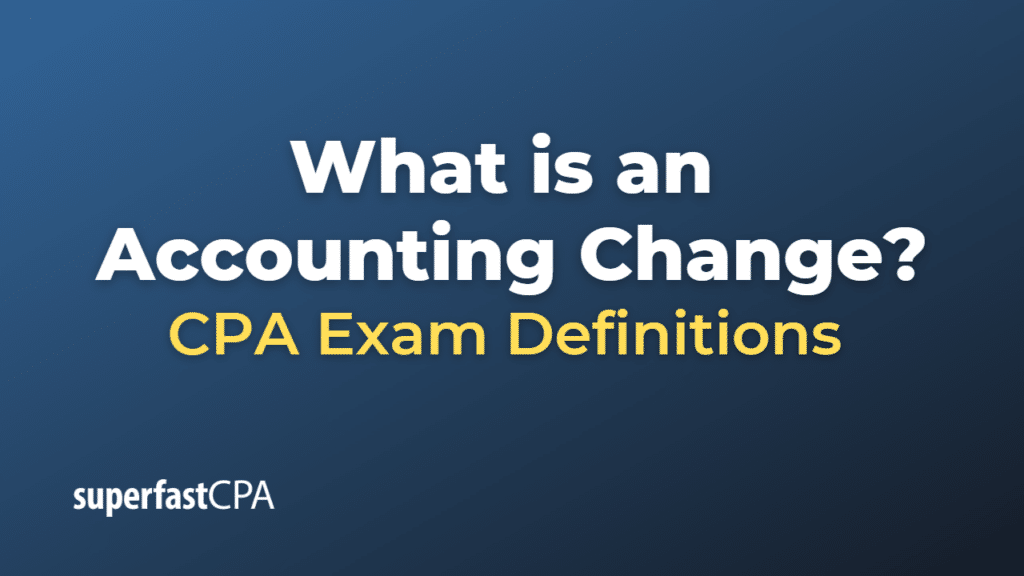Accounting Change
An accounting change refers to a modification in an organization’s accounting policies, estimates, or reporting methods. These changes can result from new accounting standards, regulatory requirements, or a shift in management’s judgment. Accounting changes can have a significant impact on a company’s financial statements, affecting reported earnings, financial ratios, and comparisons with prior periods or other companies.
There are three main types of accounting changes:
- Change in accounting principle: This occurs when a company adopts a new accounting principle or switches from one generally accepted accounting principle (GAAP) or International Financial Reporting Standard (IFRS) to another. For example, a company may change its inventory valuation method from first-in, first-out (FIFO) to last-in, first-out (LIFO). When such changes occur, the company must disclose the nature of the change, the reason for the change, and its impact on the financial statements.
- Change in accounting estimate: This occurs when a company revises an estimate due to new information or changes in circumstances. Examples include changes in the estimated useful life of an asset, adjustments to the allowance for doubtful accounts, or revisions to the estimated warranty costs. Changes in estimates are generally accounted for prospectively, meaning they affect the financial statements in the current period and future periods, but not prior periods.
- Change in reporting entity: This occurs when a company changes the scope of the financial statements, such as consolidating or deconsolidating subsidiaries or changing the composition of a group of companies. These changes require the company to present its financial statements as if the new reporting entity had existed in all prior periods.
When a company makes an accounting change, it should disclose the nature of the change, the reason for the change, and the financial impact on its financial statements. This ensures transparency and helps investors, analysts, and other stakeholders understand the implications of the change on the company’s reported financial performance and position.
Example of an Accounting Change
Let’s consider a fictional example of a manufacturing company called “TechPro Industries” to illustrate an accounting change.
TechPro Industries has been using the straight-line depreciation method for its machinery since its inception. In 2023, the company’s management decides to switch to the double-declining balance depreciation method, which they believe better reflects the actual usage pattern of the machinery.
This change represents a change in accounting principle. TechPro Industries must disclose this accounting change in its financial statements and notes, providing information about the nature of the change, the reasons for the change, and its impact on the financial statements.
For example, TechPro Industries’ disclosure might read as follows:
“During the year ended December 31, 2023, TechPro Industries changed its depreciation method for machinery from the straight-line method to the double-declining balance method. Management believes the double-declining balance method better reflects the actual usage pattern of the machinery and provides a more accurate allocation of the machinery’s cost over its useful life. As a result of this change, the company’s depreciation expense for the year ended December 31, 2023, increased by $150,000, and the net income decreased by $105,000 (net of tax effect). The company has retrospectively applied this change in accounting principle to its prior-year financial statements, as required by GAAP.”
In this example, the accounting change affects the company’s depreciation expense, net income, and the carrying value of its machinery on the balance sheet. By disclosing the accounting change and its impact, TechPro Industries provides transparency to its stakeholders, allowing them to better understand the company’s financial performance and position and compare its financial statements across periods.













